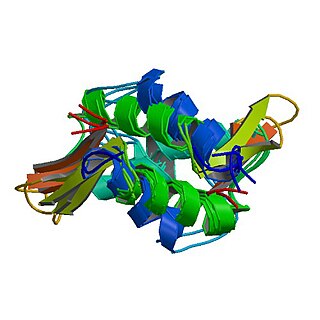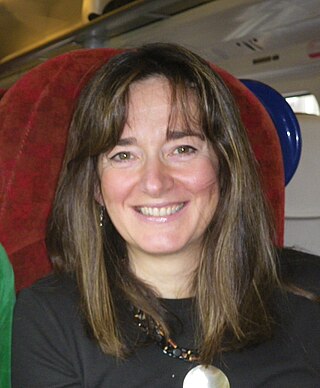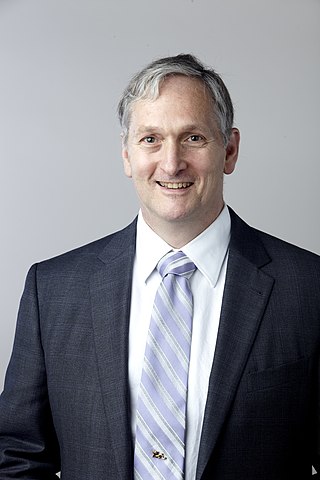
Sir John Bertrand Gurdon is a British developmental biologist. He is best known for his pioneering research in nuclear transplantation and cloning. He was awarded the Lasker Award in 2009. In 2012, he and Shinya Yamanaka were awarded the Nobel Prize for Physiology or Medicine for the discovery that mature cells can be converted to stem cells.

Histone H1 is one of the five main histone protein families which are components of chromatin in eukaryotic cells. Though highly conserved, it is nevertheless the most variable histone in sequence across species.
John Graham White is an Emeritus Professor of Anatomy and Molecular Biology at the University of Wisconsin–Madison. His research interests are in the biology of the model organism Caenorhabditis elegans and laser microscopy.
Douglas A. Melton is the Xander University Professor at Harvard University, and an investigator at the Howard Hughes Medical Institute. Additionally, Melton serves as the co-director of the Harvard Stem Cell Institute and was the first co-chair of the Harvard University Department of Stem Cell and Regenerative Biology. Melton is a founder of several biotech companies including Gilead Sciences, Ontogeny, iPierian, and Semma Therapeutics. Melton holds membership in the National Academy of the Sciences, the American Academy of Arts and Sciences, and is a founding member of the International Society for Stem Cell Research.

Paired amphipathic helix protein Sin3a is a protein that in humans is encoded by the SIN3A gene.

Edward Michael De Robertis is an American embryologist and Professor at the University of California, Los Angeles. His work has contributed to the finding of conserved molecular processes of embryonic inductions that result in tissue differentiations during animal development. He was elected to the National Academy of Sciences in 2013, worked for the Howard Hughes Medical Institute for 26 years, and holds a Distinguished Professor at the University of California, Los Angeles. In 2009 Pope Benedict XVI appointed De Robertis to a lifetime position in the Pontifical Academy of Sciences, and in 2022 Pope Francis appointed him Councillor of the Academy for four years.

Rosa Susan Penelope Beddington FRS was a British biologist whose career had a major impact on developmental biology.
Margaret Buckingham, is a British developmental biologist working in the fields of myogenesis and cardiogenesis. She is an honorary professor at the Pasteur Institute in Paris and emeritus director in the Centre national de la recherche scientifique (CNRS). She is a member of the European Molecular Biology Organization, the Academia Europaea and the French Academy of Sciences.

Athanasia Papalopulu is a Wellcome Trust senior research fellow and Professor of Developmental Neuroscience in the School of Biological Sciences, University of Manchester.
Harold M. "Hal" Weintraub was an American scientist who lived from 1945 until his death in 1995 from an aggressive brain tumor. Only 49 years old, Weintraub left behind a legacy of research.

Clifford James Tabin is chairman of the Department of Genetics at Harvard Medical School.
Sir Hugh Reginald Brentnall Pelham, is a cell biologist who has contributed to our understanding of the body's response to rises in temperature through the synthesis of heat shock proteins. He served as director of the Medical Research Council (MRC) Laboratory of Molecular Biology (LMB) between 2006 and 2018.

Thomas Jenuwein is a German scientist working in the fields of epigenetics, chromatin biology, gene regulation and genome function.
James Briscoe is a senior group leader at the Francis Crick Institute in London and editor-in-chief of the journal Development.

Richard Malcolm Marais is Director of the Cancer Research UK (CRUK) Manchester Institute and Professor of Molecular Oncology at the University of Manchester.

Sir Richard Henry Treisman is a British scientist specialising in the molecular biology of cancer. Treisman is a director of research at the Francis Crick Institute in London.

Neil Alexander Steven Brockdorff is a Wellcome Trust Principal Research Fellow and professor in the department of biochemistry at the University of Oxford. Brockdorff's research investigates gene and genome regulation in mammalian development. His interests are in the molecular basis of X-inactivation, the process that evolved in mammals to equalise X chromosome gene expression levels in XX females relative to XY males.
Richard M. Harland is CH Li Distinguished Professor of Genetics, Genomics and Development at the University of California, Berkeley.

The dorsal lip of the blastopore is a structure that forms during early embryonic development and is important for its role in organizing the germ layers. The dorsal lip is formed during early gastrulation as folding of tissue along the involuting marginal zone of the blastocoel forms an opening known as the blastopore. It is particularly important for its role in neural induction through the default model, where signaling from the dorsal lip protects a region of the epiblast from becoming epidermis, thus allowing it to develop to its default neural tissue.
François Guillemot,, is a French neurobiologist, currently working at the Francis Crick Institute in London. His research focuses on the behaviour of neural stem cells in embryos and adult brains.












